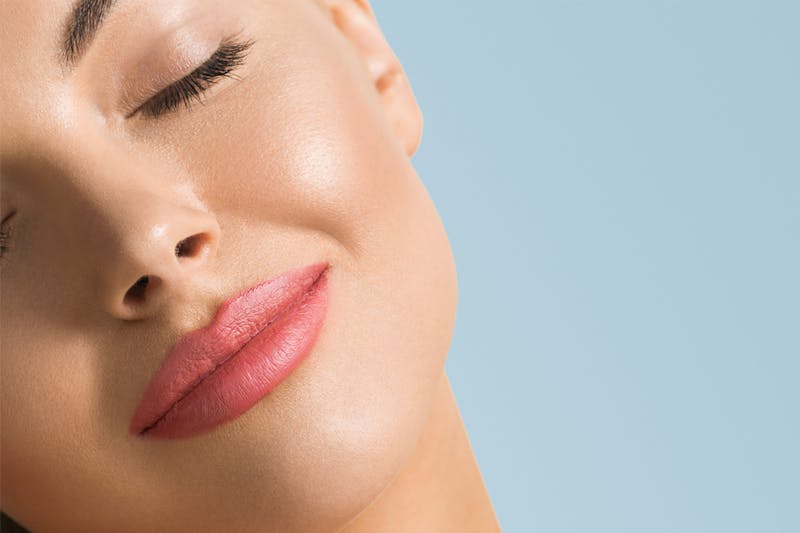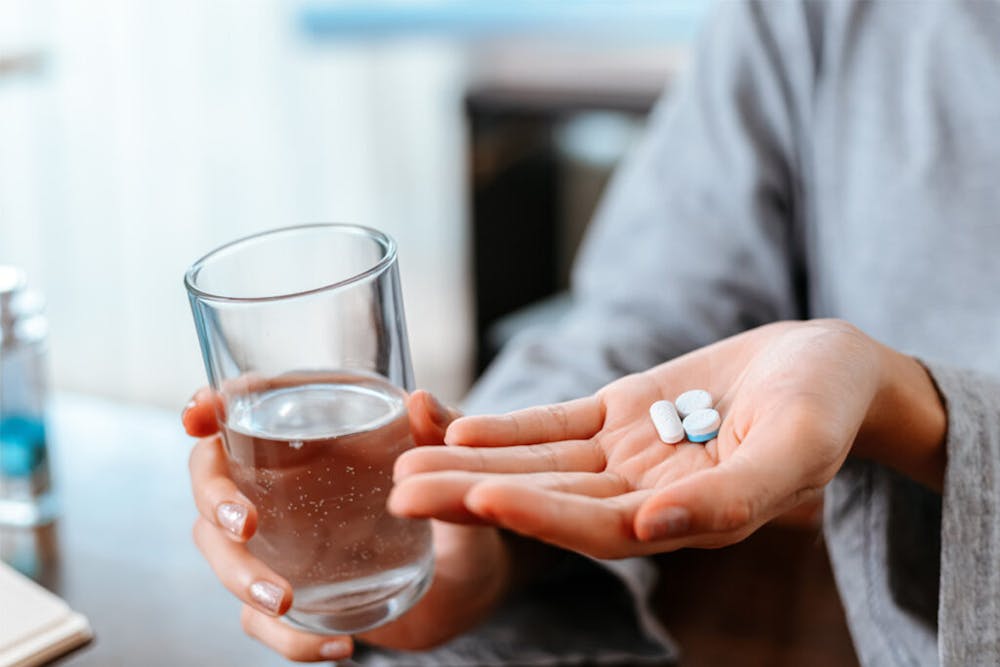
Lip lift procedures are widely recognized as an effective solution for having a rejuvenated and more defined lip. The goal of this cosmetic procedure is to create fuller and more youthful lips that will enhance overall facial appearance and boost self-confidence.
If you are considering a surgical lip lift, understanding the recovery process will help ensure proper healing to achieve the best possible results. This article provides a comprehensive day-by-day timeline of the lip lift recovery process.
What Is a Lip Lift?
A lip lift is a cosmetic surgery that’s performed to raise the upper lip toward the nose. As people get older, the philtrum – the skin between the upper lip and nose – can lengthen, causing the upper lip to droop over the teeth. A lip lift surgically lifts the upper lip back up toward the nose to restore a more youthful, proportional shape to the lips.
There are different surgical techniques to determine where and how the lip lift incision is made. The goal of the lip lift surgery is to raise the upper lip to a position on the patient’s face that appears more natural and appealing.
Advantages of a Lip Lift
Lip lifts provide natural-looking, long-lasting solutions to age-related lip changes. This procedure has several advantages, such as:
- Restoring youthful lip anatomy
- Improving overall facial aesthetics
- Correcting drooping corners that can give a downturned or sad-looking appearance
- The natural-looking results are long-lasting, unlike temporary lip fillers
The Surgery Day
Surgical Procedure
In the lip lift procedure, the surgeon makes a precise incision either at the base of the nostril or along the vermillion border, where the lip’s pink tissue intersects with the surrounding skin. The type of lip lift you undergo, whether a sub-nasal lip lift, a corner lip lift, or another variant, determines the exact location and shape of the incision. Excess skin is then removed, and the lip is lifted to create a fuller appearance.
Anesthesia Used During the Procedure
Lip lift surgery is typically performed under local anesthesia, ensuring the patient’s comfort throughout the procedure. This means you’ll be awake but will not feel any pain. In some cases, the surgeon may choose to use general anesthesia. This will depend on the patient’s health status and personal preference.
Aftercare Instructions on Surgery Day
After the surgical procedure, the surgeon will provide aftercare instructions to ensure a comfortable healing process. These may include recommendations on prescription pain medication, wound care, and dietary adjustments. It’s essential to follow these instructions closely to minimize the risk of complications and promote healing.
Day 1 Post-Surgery
Following lip lift surgery, post-operative care is paramount to the healing process. It’s normal to experience discomfort as the anesthesia wears off and some swelling sets in.
Pain Management and Medication
After the surgery, your doctor may recommend taking pain medication to help manage any soreness or discomfort during the recovery process. It’s important to follow the dosage instructions provided by your surgeon. Over-the-counter pain relievers may also be recommended.
Resting and Taking it Easy
Rest is essential during the initial healing period. Avoid facial movements, especially around the lip area, and focus on recovery.

Days 2-3: Initial Swelling and Discomfort
During the first few days after surgery, you may experience initial swelling and discomfort. This is a normal part of the healing process.
Applying Cold Compresses
Applying cold compresses to the lip area can help reduce swelling. Follow your surgeon’s recommended application time and avoid applying ice directly to the skin.
Adjusting Your Way to Sleep
To minimize swelling, it’s recommended to sleep with your head elevated at 30° (using about two to three pillows) for the first few weeks after surgery. Avoid sleeping on your face to prevent putting pressure on the surgical site.
Days 4-7: Beginning of Healing
During this time, the healing process begins to take shape. The swelling and discomfort should start to decrease, and you may notice the first signs of your new lip shape.
Gradually Resuming Normal Activities
By days 4-7, you can typically resume some of your normal daily activities. Simple physical activity like walking or light housework can be resumed, but stop the activity if it aggravates the wound.
Avoiding any Strenuous Activities and Sun Exposure
Light walking is recommended at this time, but strenuous exercise, heavy lifting, and excessive bending should be avoided to prevent disrupting the healing process. Avoid quick movements or opening your mouth widely. Sun exposure should also be limited as it can darken scarring and slow the healing time. Wearing a hat or using an umbrella outdoors will help protect the surgical site while getting the movement needed for proper recovery.
Careful Eating Habits
During the first week after surgery, it’s recommended to stick to a soft food diet and to eat with small mouth movements to avoid putting pressure on the surgical site. Foods like soup, yogurt, and mashed potatoes are ideal. Avoid acidic foods or drinks as they can irritate the healing incision. In addition, consuming a sufficient amount of water can accelerate the healing process and maintain adequate hydration levels in the body.
Days 8-14: Stitches Removal and Scar Maturation
This recovery period marks an important milestone in the lip-lift recovery process. Stitches are typically removed after the first week (sometimes a few days sooner), and the scar begins to mature.
Keeping the Incision Site Clean
Your surgeon will provide instructions on how to keep the incision site clean to prevent infection and promote healing. This may involve gently washing the area with a diluted hydrogen peroxide solution and applying a prescribed ointment.
Avoiding a Visible Scar
While some scarring is an inherent and natural part of the body’s healing process after surgery, there are steps you can take to minimize the visibility of the scar. Once the stitches are removed, you can apply a scar gel or cream as directed by your surgeon. Protecting the area from sun exposure is also crucial, as it can darken the scar.
Follow Up Appointments with Your Surgeon
During this recovery period, you’ll likely have a follow-up appointment with your surgeon. This is an opportunity for your surgeon to assess your healing progress and address any concerns you may have. Attend all follow-up appointments to ensure a smooth recovery process.
Post 2 Months: Long-Term Results
Two months after surgery, most swelling and bruising from a lip lift should have faded, revealing a more defined, youthful shape with natural-looking enhancement. While final results will take several months as healing continues, regular follow-ups with your surgeon will ensure you are on track to achieve optimal results.
Potential Complications and How to Address Them
A lip lift carries risks like infection, bleeding, uneven swelling, and scarring, so it’s vital to follow your surgeon’s post-op instructions to avoid complications. If you notice signs of infection or excessive scarring, contact your surgeon immediately for the appropriate treatment. Choosing an experienced, board-certified plastic surgeon and following aftercare instructions minimizes risks and helps ensure the best possible outcome from your procedure.
Consult with a Facial Plastic Surgeon
If you’re considering a lip lift procedure, it’s critical to consult with a skilled facial plastic surgeon. Dr. Andre Panossian is a board-certified plastic surgeon with extensive experience in lip lift procedures. He can determine whether you are an ideal candidate for the surgery and which type of lift is best for your cosmetic goals. Take the first step to having beautiful, naturally-looking, enhanced lips. Contact us in Pasadena at 626-765-6885 to schedule a consultation.


